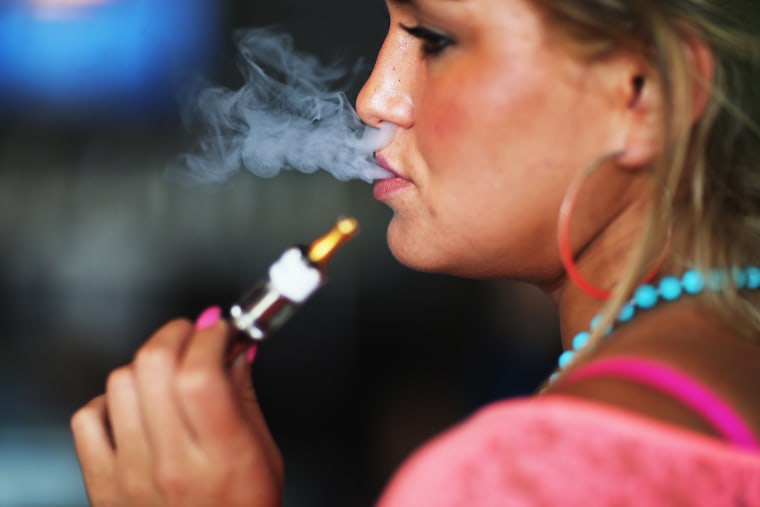Flavored e-cigarette products and trendy new vaping devices like Juul are luring teenagers away from smoked cigarettes but keeping them hooked on nicotine, federal health officials said Thursday.
The latest tobacco use survey shows a drop in the number of high school students who use tobacco, from 24 percent in 2011 to about 20 percent in 2017.
The drop could potentially have been bigger. E-cigarettes were barely known in 2011, so virtually all teen tobacco users were smokers. Now, just under 13 percent of high school students smoke cigarettes.
Almost all of the rest are vaping, the CDC survey found.
“Since 2014, e-cigarettes have been the most commonly used tobacco product among both middle and high school students,” the CDC team, led by Teresa Wang of the Office on Smoking and Health, wrote in their report.
And the number of students who use tobacco did not change between 2016 and 2017.
“The almost flat figure on youth e-cigarette use revealed in this new CDC survey should be viewed with apprehension,” American Heart Association CEO Nancy Brown said in a statement.
“Our greatest fear is that this may be a warning sign of a reversal, and in the coming years we may see a disturbing rise in the number of middle and high school students who smoke e-cigarettes.”
So federal officials are promising to work harder to help prevent teenagers from using any tobacco products.
“We’re going to hold industry participants responsible for actions that promote youth addiction. There’s no acceptable number of children using tobacco products,” FDA commissioner Dr. Scott Gottlieb said in a statement.
“While fewer youth are using cigarettes and other combustible tobacco products, we must do more to address the disturbingly high number of youth who are using e-cigarettes and vaping products.”
Brown called vaping a “scary trend”.
“The tobacco industry is well aware that flavored tobacco products appeal to youth and has taken advantage of this by marketing them in a wide range of fruit and candy flavors. Their strategy is working too well, unfortunately,” she said.
The FDA has taken some actions to help reduce the sale of tobacco products to underage kids and has asked the makers of Juul to reveal some of their marketing methods to help show whether they have intentionally targeted teens.
Juul Labs says it’s begun an advertising campaign to “combat underage use.”
Matthew Myers, president of the Campaign for Tobacco-Free Kids, said the CDC’s survey may not reflect Juul’s popularity among kids.
“Juul was not specifically mentioned in the survey, and many teens refer to Juul use as “juuling,” indicating they may not consider it to be using an e-cigarette,” Myers said.
“Juul looks like a USB flash drive and is easy to hide, comes in sweet flavors like mango and fruit medley, and delivers a powerful dose of nicotine, putting kids at greater risk of addiction.”
Myers also said state, local and federal health officials need to continue doing what’s been shown to work to help stop kids and adults alike from using tobacco products.
“These include significantly higher tobacco taxes, comprehensive smoke-free laws, well-funded tobacco prevention and cessation programs, effective FDA oversight of all tobacco products, and hard-hitting media campaigns, like the campaigns conducted by the Centers for Disease Control and Prevention, the FDA and Truth Initiative in recent years,” he said.
“States and localities should also continue to raise the tobacco sale age to 21, as five states and at least 320 cities and counties have now done.”
Gottlieb said it’s especially important to stop children from using nicotine of any kind.
“These figures are particularly concerning because youth exposure to nicotine — whether it comes from a cigarette or an e-cigarette — affects the developing brain and may rewire it to be more susceptible to nicotine addiction in the future,” he said.




